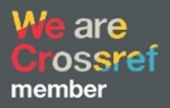PENGENDALIAN KUALITAS PRODUK MEBEL DENGAN PENDEKATAN METODE NEW SEVEN TOOLS
DOI:
https://doi.org/10.51804/tesj.v4i1.791.27-34Keywords:
defect, new seven tools, pengendalian kualitasAbstract
Perusahaan memproduksi mebel berorientasi ekspor ke Amerika bersifat job order. Pemesanan skala ekspor ke luar negeri menuntut kualitas tinggi dengan bahan baku yang baik. Bahan baku utama produk mebel antara lain kayu meranti putih, meranti merah, dan mahoni yang berasal dari Kalimantan , dan rotan sebagai bahan penunjang. Pada saat proses produksi masih ditemukan defect yang berupa baret, skrup muncul, rompak kayu, bluestain (serat kayu tidak standar) dan mata kayu. Untuk menjamin kualitas dan meminimasi jumlah defect, maka perlu dilakukan penelitian untuk mengetahui faktor-faktor apa saja yang menyebabkan kecacatan produk agar dapat dilakukan perbaikan secara kualitatif dengan metode new seven tools yaitu affinity diagram, interrelationship diagram, tree diagram, matrix diagram, activity network diagram, pdpc (process decision program chart), matrix data analysis. Berdasarkan hasil pengolahan dan analisis didapatkan bahwa faktor–faktor penyebab kecacatan produk pada mebel adalah kurangnya kemampuan dan ketelitian operator menguasai mesin. Faktor mesin juga menjadi penyebab cacat. Sehingga evaluasi perbaikan yang dapat dilakukan adalah melakukan pelatihan dan sosialiasasi SOP pengoperasian mesin dan melakukan maintenance secara berkala.
References
Chandradevi, A., & Puspitasari, N. B. (2016). Analisa Pengendalian Kualitas Produksi Botol X 500 Ml Pada PT. Berlina, Tbk Dengan Menggunakan Metode New Seven Tools. Industrial Engineering Online Journal, 5(4).
Ginting, R., & Fattah, M. G. (2020). Production quality control with new seven tools for defect minimization on PT. Dirgantara Indonesia. In IOP Conference Series: Earth and Environmental Science (Vol. 452, p. 12082). IOP Publishing.
Hui, Z., Ming, S., Cheng, L., Hong-Fang, C., Yue-Kun, H., Yong-Jie, S., … Shuai, Y. (2013). A GEANT4 simulation study of BESIII endcap TOF upgrade. Chinese Physics C, 37(9), 96002.
Kusnadi, M. A. (2014). Hubungan Antara Beban Kerja dan Self-Efficacy dengan Stres Kerja pada Dosen Universitas X. CALYPTRA, 3(1), 1–15.
Michalski, K. A., & Mosig, J. R. (1997). Multilayered media Green’s functions in integral equation formulations. IEEE Transactions on Antennas and Propagation, 45(3), 508–519.
Mizuno, S. (2020). Management for quality improvement: the 7 new QC tools. CRC Press.
Pramono, S. N. W., Ulkhaq, M. M., Rachmadina, D. P., Trianto, R., Rachmadani, A. P., Wijayanti, W. R., & Dewi, W. R. (2018). The Use of Quality Management Techniques: The Application of the New Seven Tools. International Journal of Applied Science and Engineering, 15(2), 105–112.
Rahayuningtyas, W., & Sriyanto, S. (2018). ANALISIS PENGENDALIAN KUALITAS PADA PRODUK TAHU BAXO IBU PUDJI MENGGUNAKAN METODE NEW SEVEN TOOLS (Studi Kasus pada CV. Pudji Lestari Sentosa). Industrial Engineering Online Journal, 6(4).
Sepsarianto, R. (2013). Analisis Masalah 7 Tools. URL: Http://Www. Scribd. Com/Doc/189322119/Analisis-Masalah-7-Tools (13 Agustus 2013).
Tsironis, L. K. (2018). Quality improvement calls data mining: the case of the seven new quality tools. Benchmarking: An International Journal.
Wisnubroto, P., & Rukmana, A. (2015). Pengendalian kualitas produk dengan pendekatan six sigma dan analisis kaizen serta new seven tools sebagai usaha pengurangan kecacatan produk. Jurnal Teknologi, 8(1), 65–74.
Downloads
Published
Issue
Section
License
With the receipt of the article by TESJ Editorial Board and the decision to be published, the copyright regarding the article will be transferred to TESJ. The copyright transfer form can be downloaded here.
TESJ has the right to multiply and distribute the article, and every author is not allowed to publish the same article published in this journal.

Teknika: Engineering and Sains Journal is licensed under a Creative Commons Attribution 4.0 International License.
Under the following terms:
Attribution — You must give appropriate credit, provide a link to the license, and indicate if changes were made. You may do so in any reasonable manner, but not in any way that suggests the licensor endorses you or your use.
.jpg)


